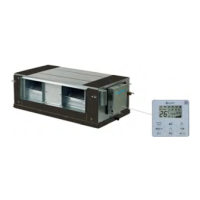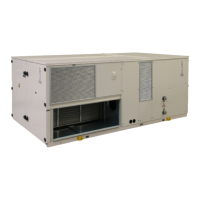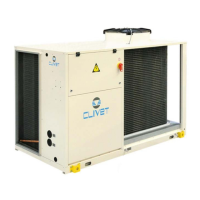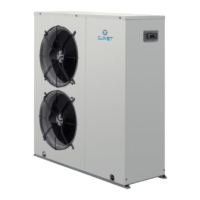10 CSRN-XHE2 FFA 12.2-24.4 M07Z40M15-02
4 Water connections
4.1 Condensate drain
The condensate must be disposed in order to avoid damages to people and things.
•
Unit discharge tting: the connection must not transmit mechanical stresses and must be performed taking care not to damage the unit
discharge tting.
•
Provide a siphon that, eliminating the negative pressure caused by the fan, prevents the air intake from the discharge duct.
•
The ducting must have a min. slope of 3% to allow the runo.
•
Anchor the ducting with an adequate number of supports.
•
Insulate the duct and the siphon to avoid the condensate drippings.
•
Connect the condensate discharge to a sewerage drainage network.
DO NOT use white water or drainage networks to avoid the aspiration of odours in the case of evaporation of water contained in the siphon.
Check at the end of the work, the regular condensate runo pouring some water in the tray.
For details see:
14 Dimensional drawingsp.47
4.2 Risk of freezing
If the unit or the relative water connections are subject to temperatures close to 0°C:
•
mix water with glycol, or
•
safeguard the pipes with heating cables placed under the insulation, or
•
empty the system in cases of long non-use
4.3 Anti-freeze solution
The use of an anti-freeze solution results in an increase in pressure drop.
Make sure that the glycol type utilized is inhibited (not corrosive) and compatible with the water circuit components.
Do not use dierent glicol mixture (i.e. ethylene with propylene).
4.4 Humidier
For details see:
10 Accessoriesp.37
